Shipyard closures had 'huge impact' on city
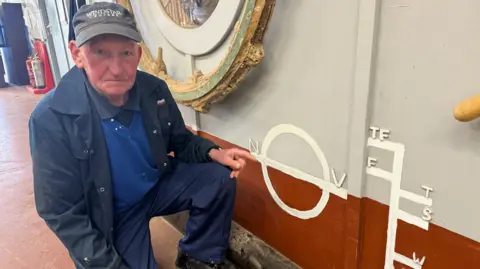 BBC
BBCA former shipyard worker has recalled the moment he knew the industry in his city was coming to an end with the loss of thousands of jobs.
Alex Sherriff was among the last batch of employees to build vessels in Sunderland as the final yard closed in 1988.
To honour them, two sculptures have been installed on the banks of the River Wear - one of workers having their lunch and another depicting a former shipbuilder telling his granddaughter about the old yards.
Mr Sherriff said it remained important the industry was remembered as he felt newer generations were "slowly forgetting" the impact of shipbuilding as old colleagues "pass on".
He spent much of his time at shipbuilders, Austen & Pickersgill, joining in 1973 in the shot-blasting plant that he said nobody else "wanted" to work in.
"It was dirty, dusty and noisy," he told the BBC.
"The plates used to come through, were shot-blasted, then into the spray booth where there was four spray guns going.
"When the new orders used to come through there was a spring in everybody's step as we'd got another year's work."
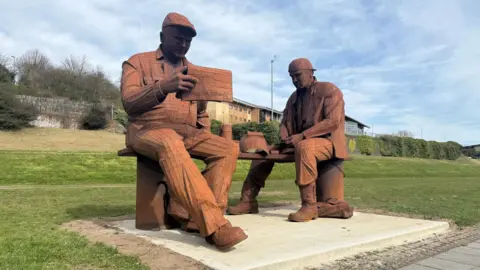
Two sculptures by County Durham-based artist Ray Lonsdale and commissioned by Sunderland City Council were unveiled at St Peter's on Thursday.
Mr Lonsdale explained: "One is called 'It Says Here' and is of two shipyard workers having their bait.
"The other is called 'Launch Day' and depicts one of those workers 30 years later telling his granddaughter what it was like to see a ship launched into the Wear.
"Something she will never witness."
The artist's father, Brian, was a shipyard worker from the 1950s to the 1970s and, although he died in October, he did get to see the sculptures.
Mr Lonsdale said: "I'd like to think he'd be looking down and be proud of the work."
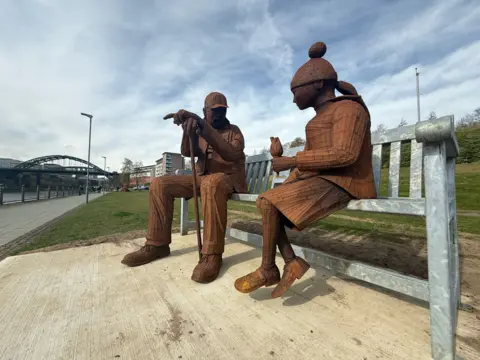
Shipbuilding on the Wear dates back to 1346 and the yards played a vital role during World War Two, producing ships to replace those lost at sea.
While much of Wearside's shipbuilding heritage has been lost, some artefacts remain at the Sunderland Maritime Heritage site in Hendon.
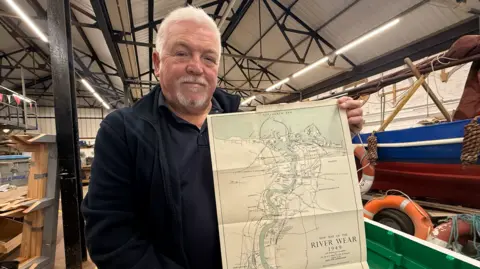
Peter Johnson, a trustee at the centre and the son of Stan Johnson who worked in the shipyards from the 1940s until the late 1970s, said: "I remember my dad coming home absolutely shattered, covered in grime.
"It was a hard life, sometimes dangerous, health and safety wasn't so stringent.
"They had asbestos to work with, they had other shoddy working practices.
"They were deaf... you can imagine the cacophony of the riveting and working with metal. You could hear it around the town.
"Thousands of men worked in the shipyards but basically overnight [they closed].
"It was on the cards – my dad knew, he knew they couldn't compete with the Far East shipyards."
He added the loss of the shipyards had a "huge impact" on the city.
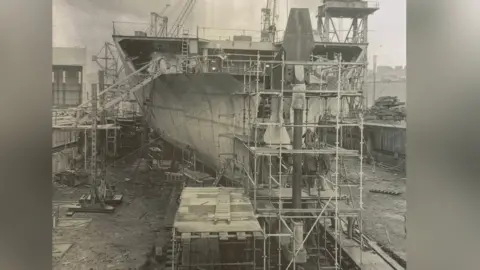 Sunderland Maritime Heritage
Sunderland Maritime HeritageMr Sherriff left just months before the final yards closed when, he remembers, work opportunities were "dwindling".
"If you knew where there was a job going, you kept it to yourself.
"I left before they closed rather than look for a job with another 4,000 people behind you."
He said former shipyard workers were now "coming to their end, getting old" and honouring their often painful and sometimes deadly work remained important.
